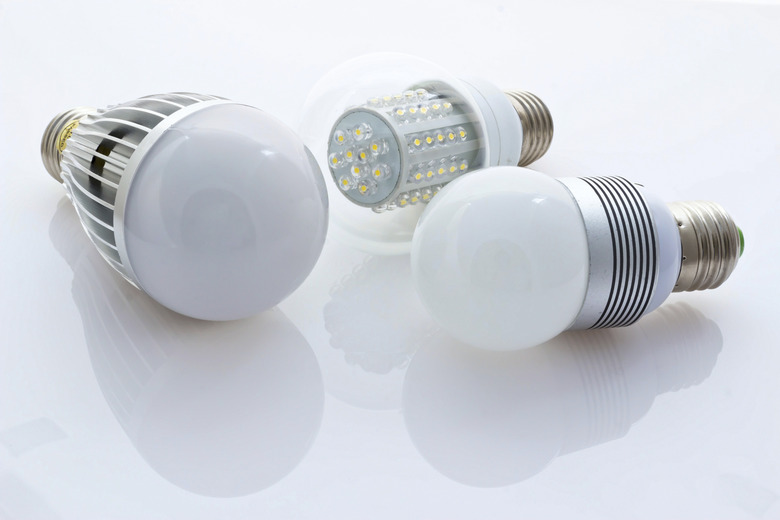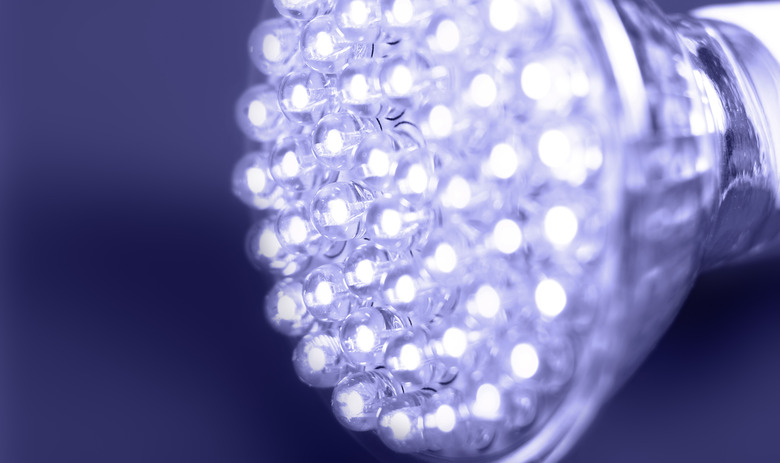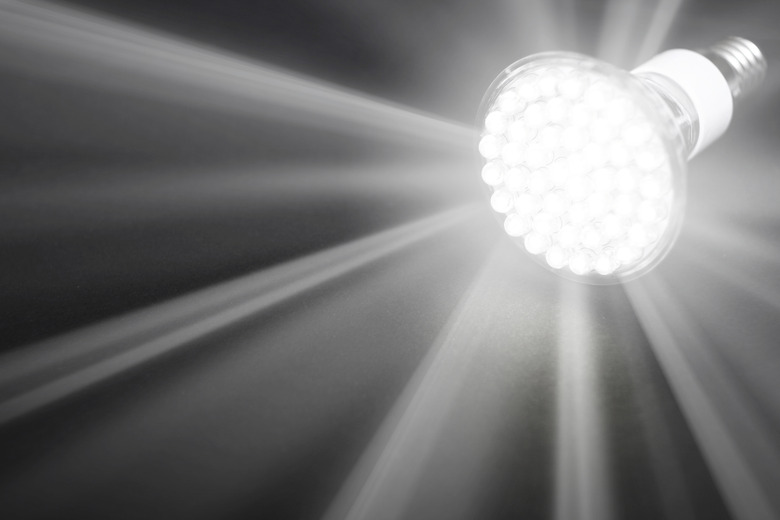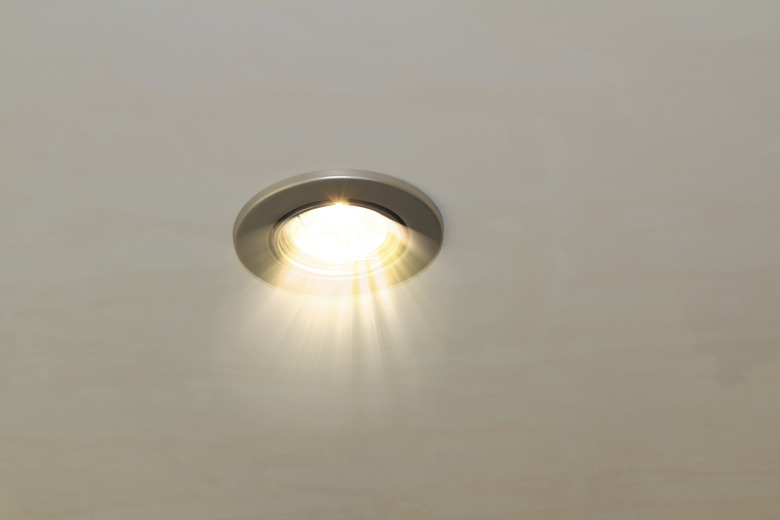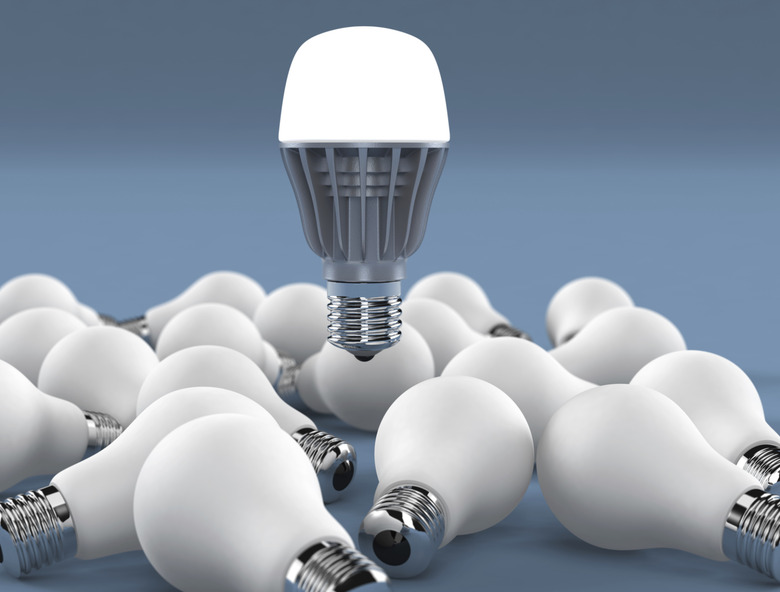LED Bulb Lumens Vs. Incandescent Bulb Lumens
Typically, the higher the amount of lumens, the brighter a light source will be. While LEDs (light-emitting diodes) produce about the same amount of lumens as incandescent light bulbs per watt of power drawn, they have a much higher efficacy than incandescent bulbs.
Lumens
Lumens
Lumens are the units of measurement used to measure the light output of a source of light. All light sources produce certain amounts of lumens. According to The LED Light.com, a lumen measures the amount of light that gets to an object.
Efficacy
Efficacy
Efficacy is defined as the efficiency of a light bulb's conversion of electricity into light. Efficacy is measured in lumens per watt or LPW. According to Lighting Components LED Corp., 80 percent of the power drawn by LEDs is given off in the form of light, with 20 percent of the power drawn given off in the form of heat. Conversely, 20 percent of the power drawn by incandescents is given off in the form of light, while 80 percent of the power drawn is given off in the form of heat.
Output
Output
The associates at ToolBase.org claim that LEDs produce around 20 lumens per watt of power. According to "The Great Internet Light Bulb Book," most incandescent light bulbs produce between eight and 21 lumens per watt of power.
Duration of Use
Duration of Use
LEDs are very small, about 1/4 of an inch in diameter. They are often clustered together to increase applications. Incandescent light bulbs are typically only rated to last around 750 hours, while LEDs can last for upward of 50,000 hours.
How They Work
How They Work
LEDs operate in a very different way from incandescent light bulbs. LEDs produce light when electricity is drawn between two electrodes. Incandescent light bulbs produce light when electricity heats up their tungsten filament.
Cite This Article
MLA
Leone, Jay. "LED Bulb Lumens Vs. Incandescent Bulb Lumens" sciencing.com, https://www.sciencing.com/led-vs-incandescent-bulb-lumens-5962085/. 24 April 2017.
APA
Leone, Jay. (2017, April 24). LED Bulb Lumens Vs. Incandescent Bulb Lumens. sciencing.com. Retrieved from https://www.sciencing.com/led-vs-incandescent-bulb-lumens-5962085/
Chicago
Leone, Jay. LED Bulb Lumens Vs. Incandescent Bulb Lumens last modified March 24, 2022. https://www.sciencing.com/led-vs-incandescent-bulb-lumens-5962085/
